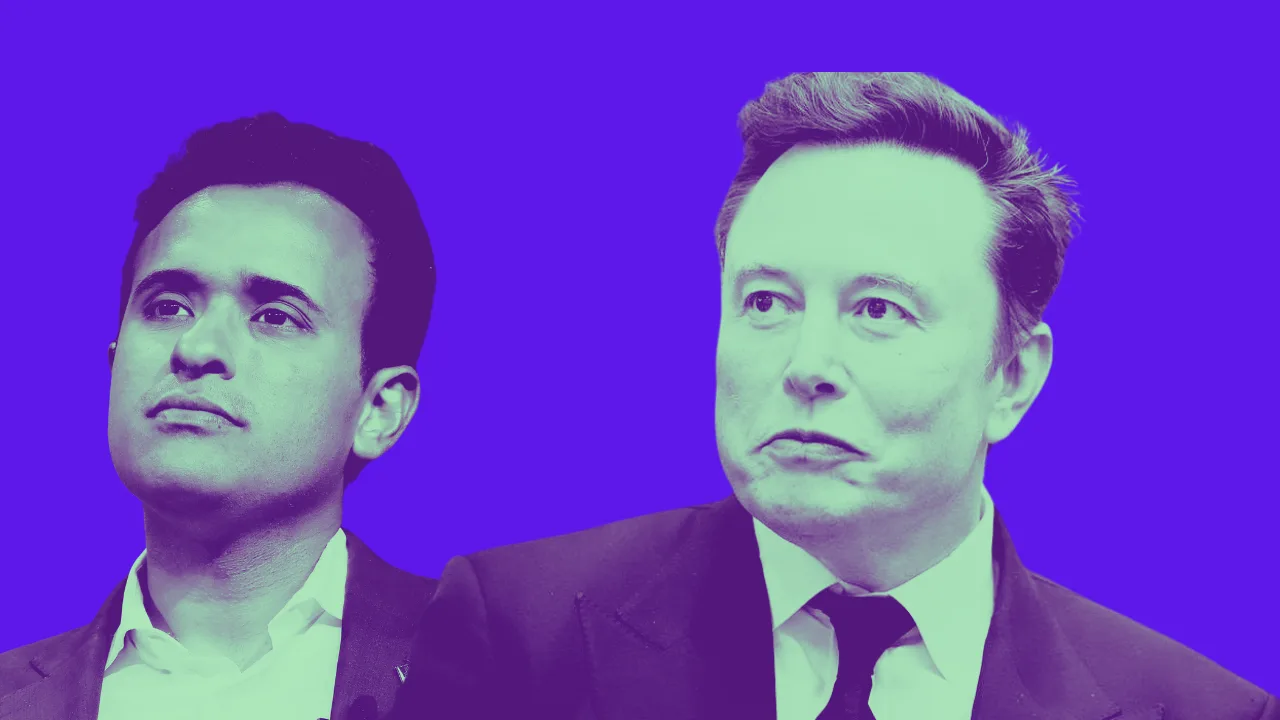When Elon Musk and entrepreneur Vivek Ramaswamy were appointed to lead the Department of Government Efficiency (DOGE), the mission was clear: reduce $2 trillion in federal spending and streamline operations. However, the first cut DOGE has made is to its own goal. In a recent interview Musk mentioned that he believes there’s a “good shot” at achieving half of the original $2 trillion target. Most experts agree that DOGE would likely need to propose reductions to popular programs like Medicaid to meet this objective.
Bold Promises, Big Expectations
DOGE was created with the aim of rooting out inefficiencies, eliminating waste, and reducing the size of the federal government. With a national debt exceeding $33 trillion, the stakes couldn’t be higher. Musk and Ramaswamy initially painted a bold vision of slashing $2 trillion in government spending—a figure that would significantly impact the U.S. deficit and potentially curb inflation.
Yet, in a recent statement, Musk admitted that this figure was a “best-case scenario” and acknowledged that a more achievable number might be closer to $1 trillion. Even this scaled-down goal, however, would mark a historic achievement in government reform.
The Only Thing That Matters: How Much Will Be Cut?
The challenge facing DOGE is simple yet monumental: what is the real number they can achieve? This is the crux of the initiative, and its success or failure will be judged solely on the size of the cuts.
A $1 Trillion Reduction: A Feasible Target?
While $2 trillion might be a long shot, even a $1 trillion reduction would represent a seismic shift in U.S. fiscal policy. To put it in perspective, this could mean:
- Significantly reducing the budget deficit.
- Lowering inflationary pressures by curbing excessive government spending.
- Restoring investor confidence in the U.S. economy.
The Obstacles Standing in the Way
Musk and his team face significant hurdles in achieving these cuts, including:
- Mandatory Spending: Programs like Social Security, Medicare, and Medicaid account for the majority of federal expenditures and are politically untouchable.
- Political Resistance: Any significant reduction in spending requires bipartisan cooperation, a rarity in today’s polarized political landscape.
- Public Backlash: Cutting funding for popular programs or subsidies could spark widespread discontent.
Why This Matters to ALL Americans
Inflation Control
Government overspending fuels inflation, driving up the cost of everyday goods and services. Even modest spending cuts could help stabilize prices and ease the financial burden on households.
Reducing the Debt Burden
The national debt’s growth is unsustainable. Failing to control it could lead to higher taxes and reduced economic opportunities for future generations.
Preserving Essential Programs
A key measure of DOGE’s success will be whether it can make cuts without harming critical programs. Americans want waste eliminated—not reductions that hurt seniors, veterans, or working families.
Can Musk and Ramaswamy Deliver?
While the specifics of DOGE’s plan remain unclear, the initiative is likely to focus on:
- Eliminating duplicative federal programs.
- Streamlining government agencies.
- Reevaluating outdated subsidies and tax breaks.
However, critics argue that without detailed plans, DOGE may overpromise and underdeliver. For now, the initiative’s credibility rests on one outcome: how much they can realistically cut.
The High Stakes of Success or Failure
If DOGE achieves even a fraction of its $2 trillion goal, it could reshape the U.S. economy and redefine government efficiency. However, falling short could be seen as another example of grand political promises with little follow-through.
For Americans, the outcome affects everything from their grocery bills to their long-term economic prospects. With inflation high and public trust in government low, the success of DOGE could offer a rare moment of bipartisan progress—or a missed opportunity.
Waiting on the Numbers
At this point, the only thing DOGE has to show for itself is the potential for cuts. While lofty goals are admirable, the initiative will ultimately be judged by its results. Will Musk and Ramaswamy succeed in achieving historic reductions in government spending, or will the obstacles prove insurmountable?
For now, Americans are left with one question: What will the final number be?





